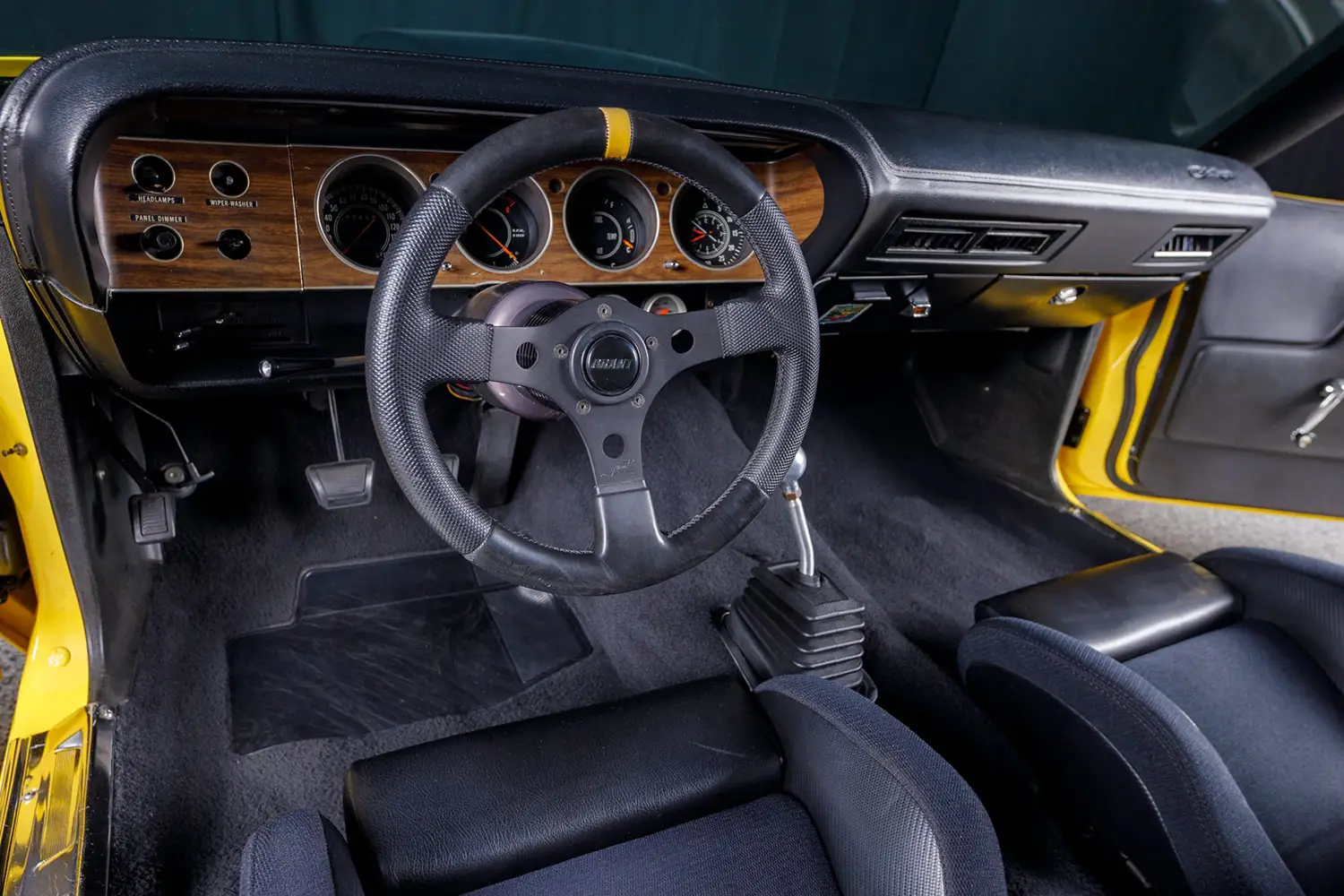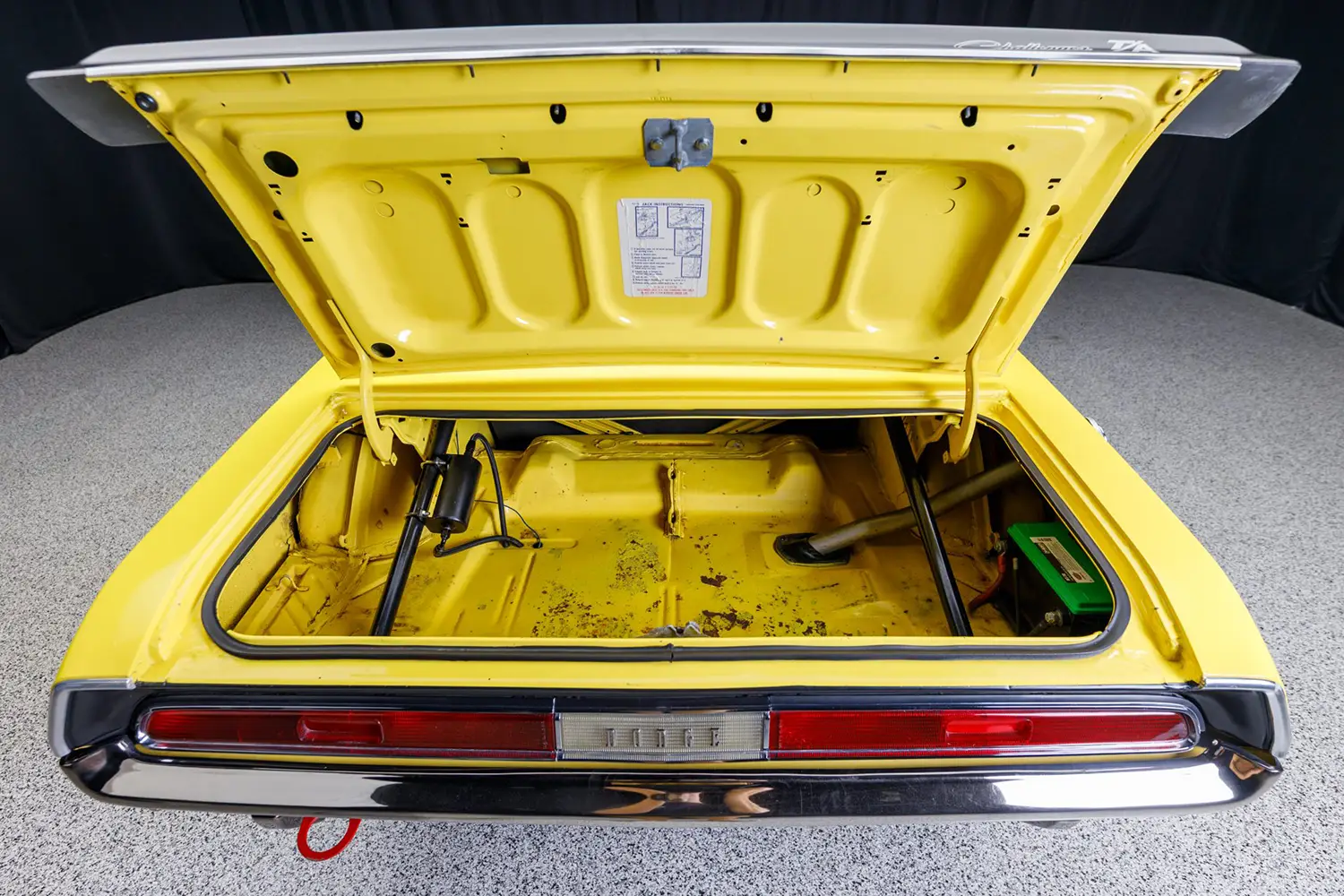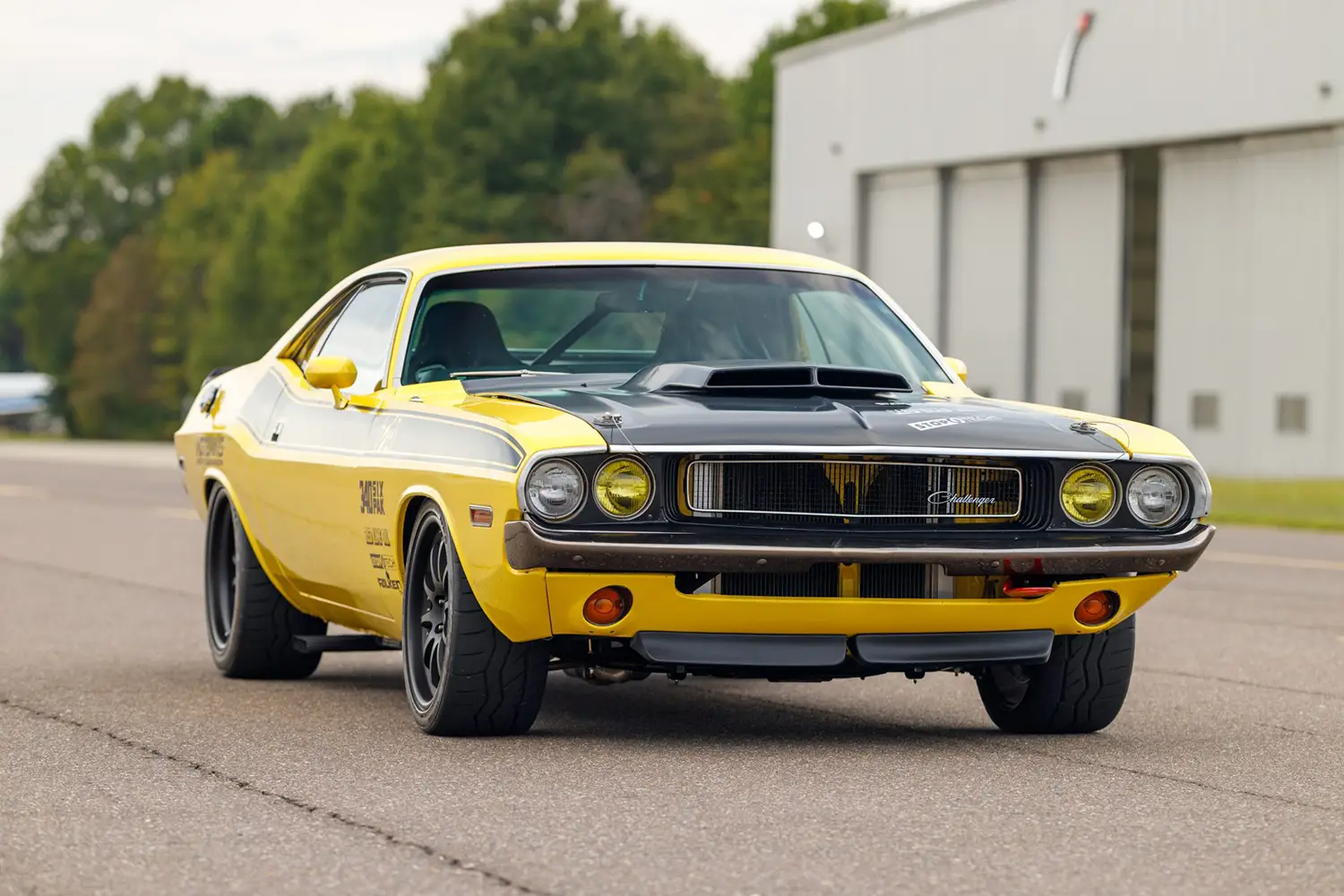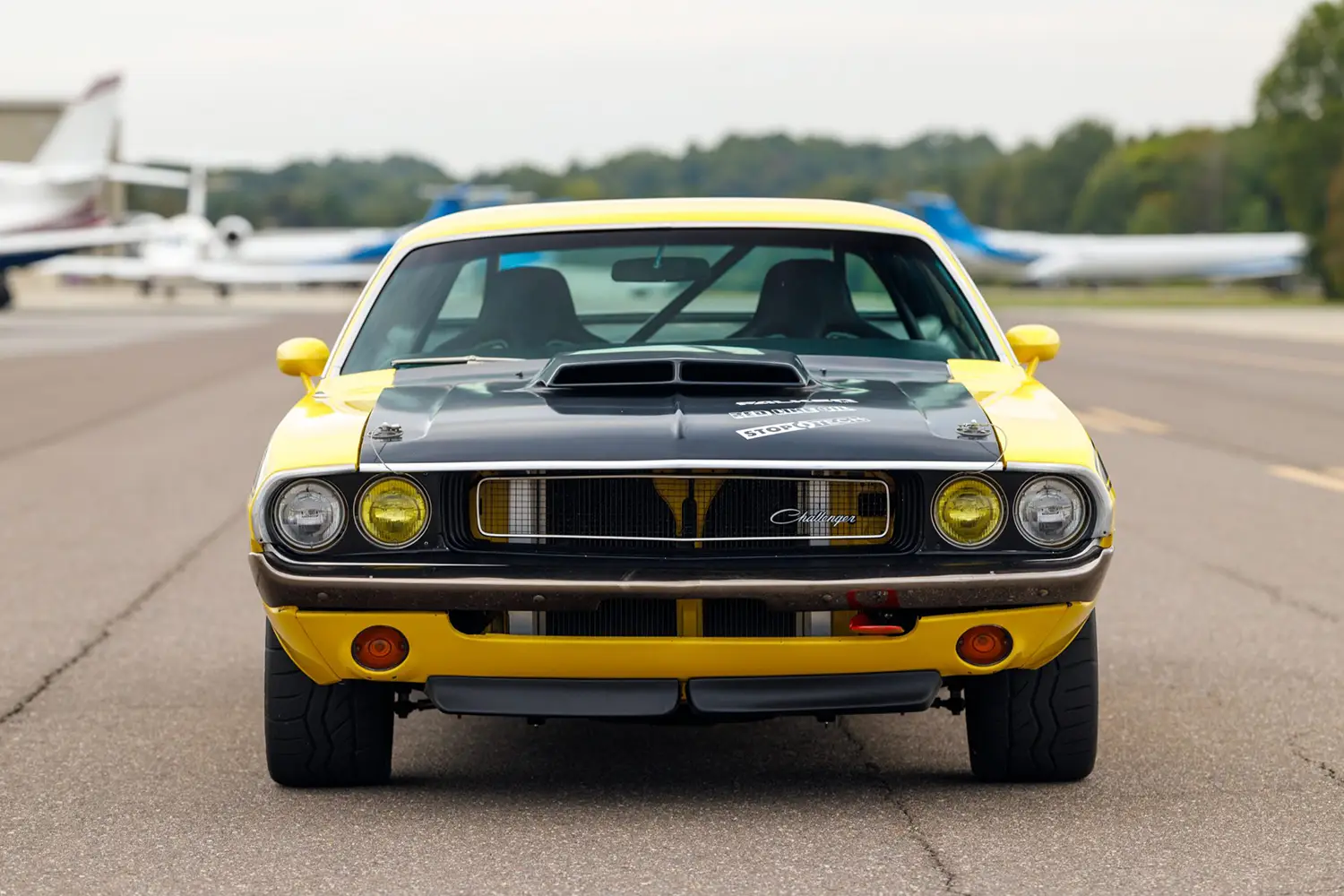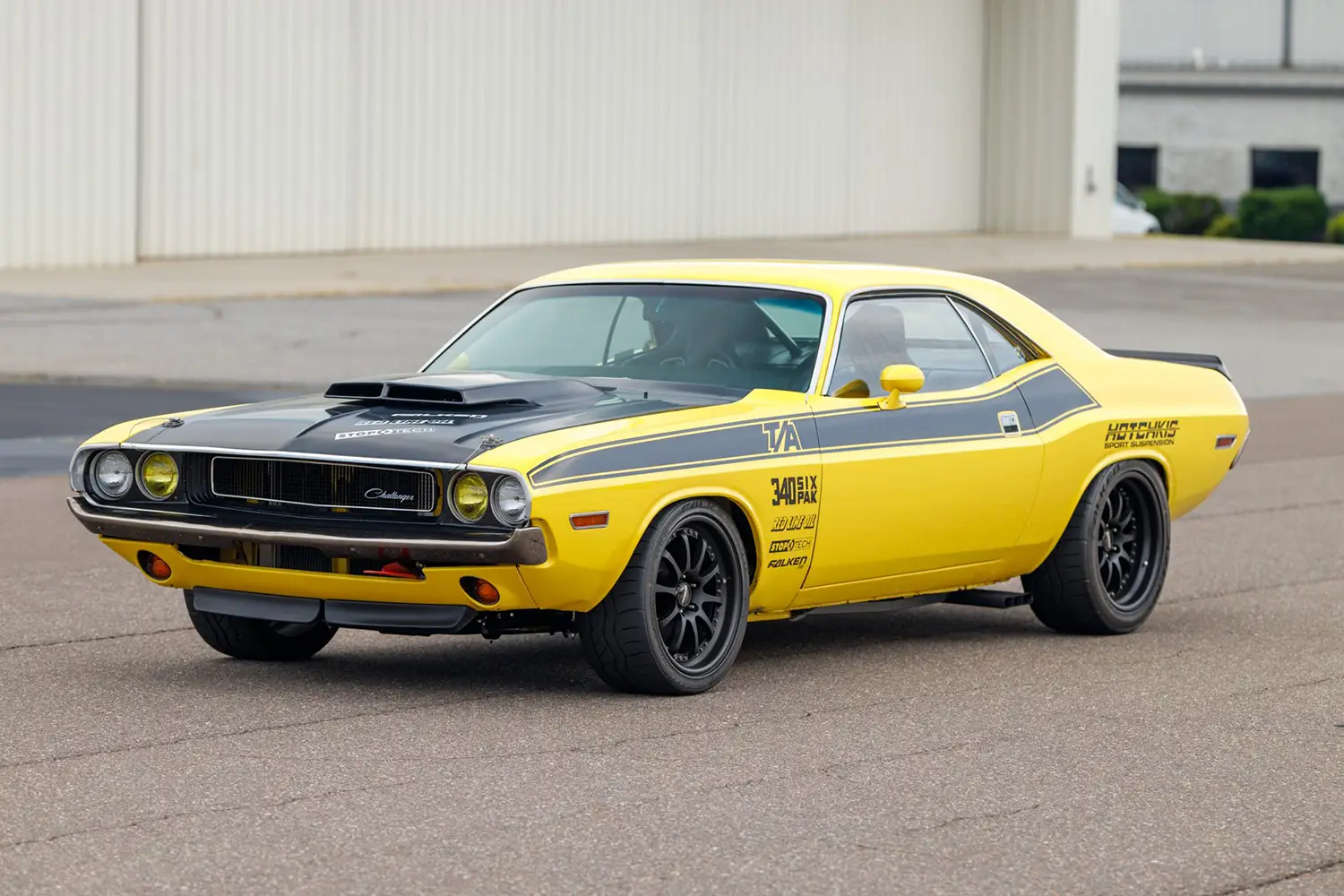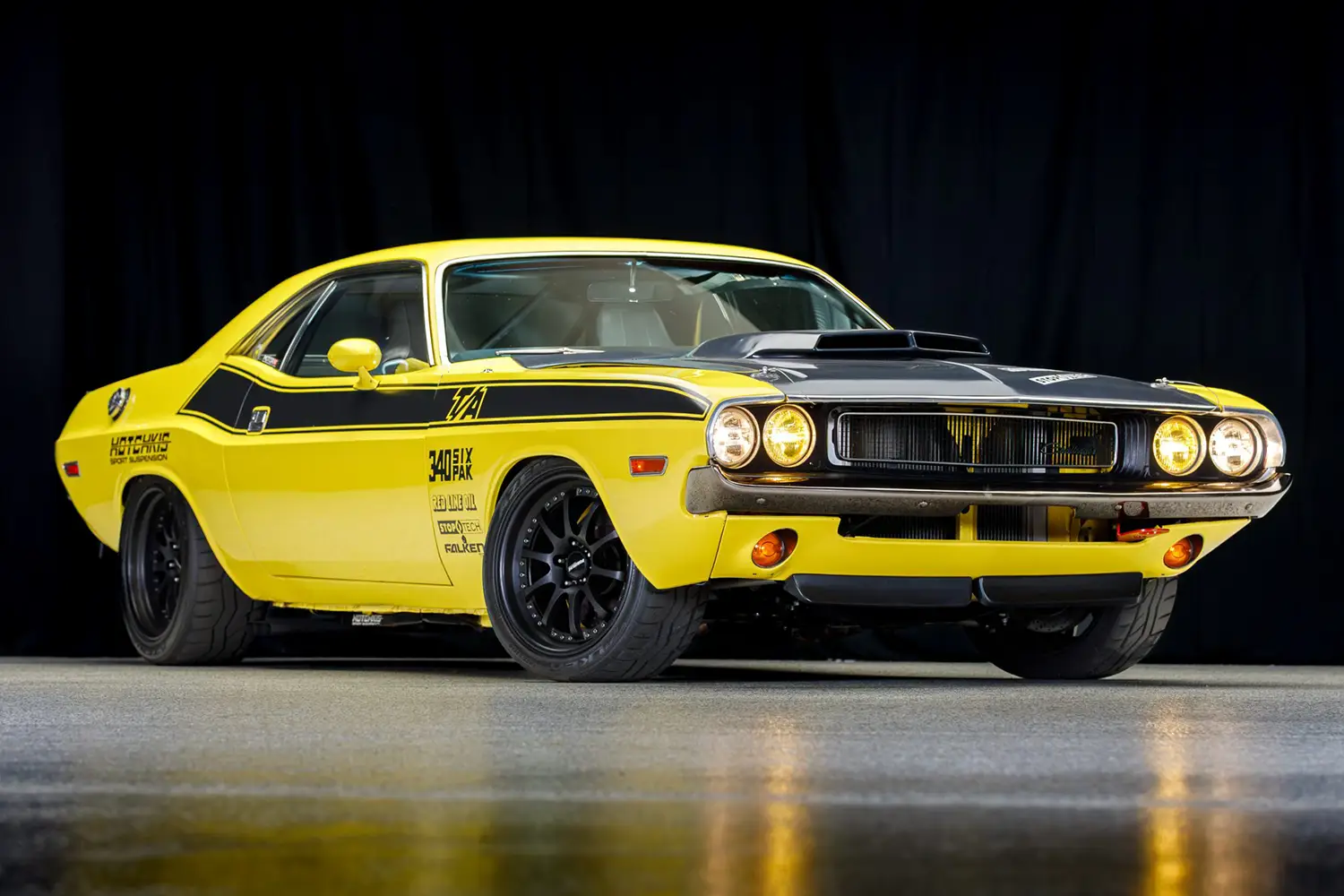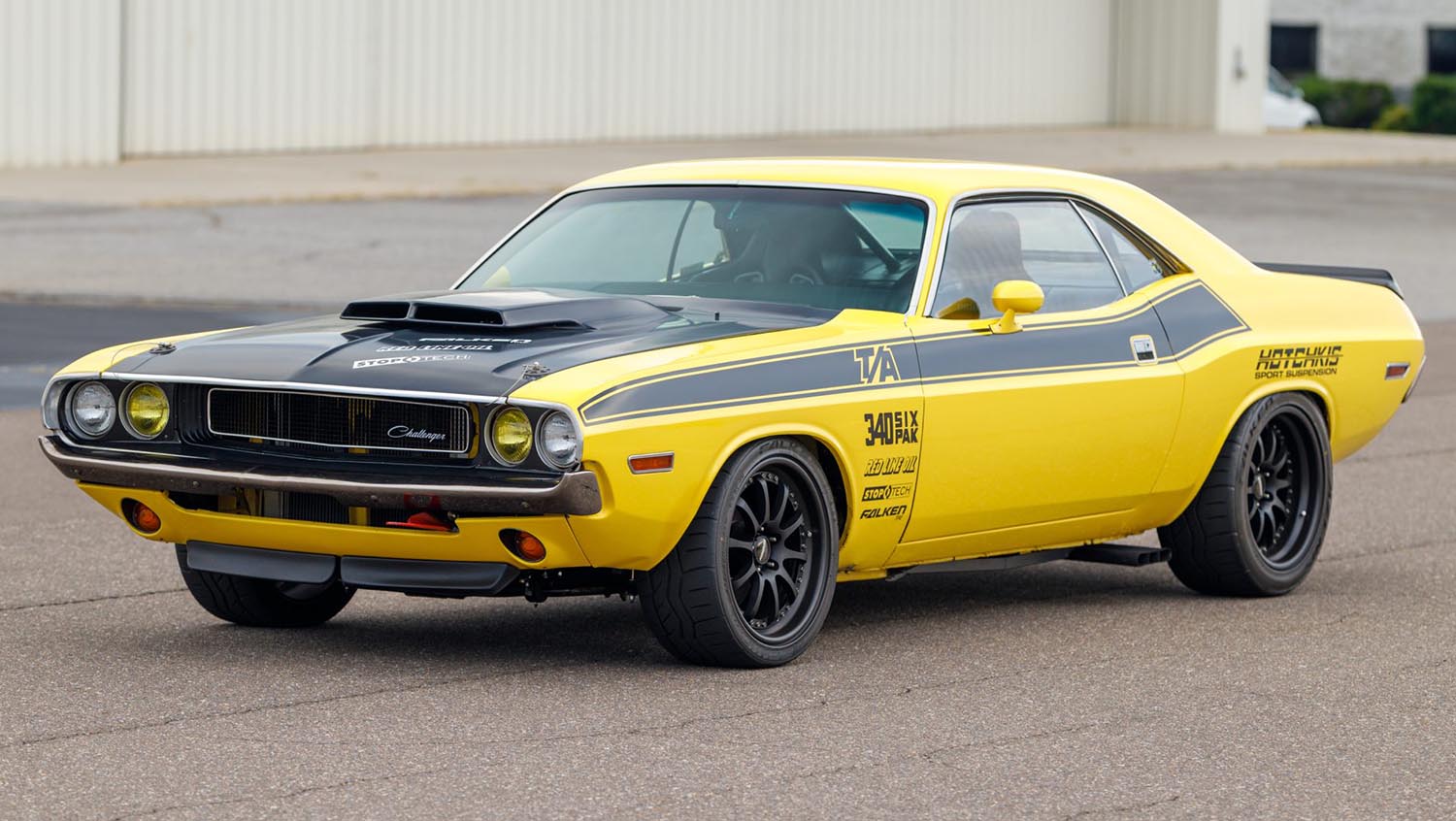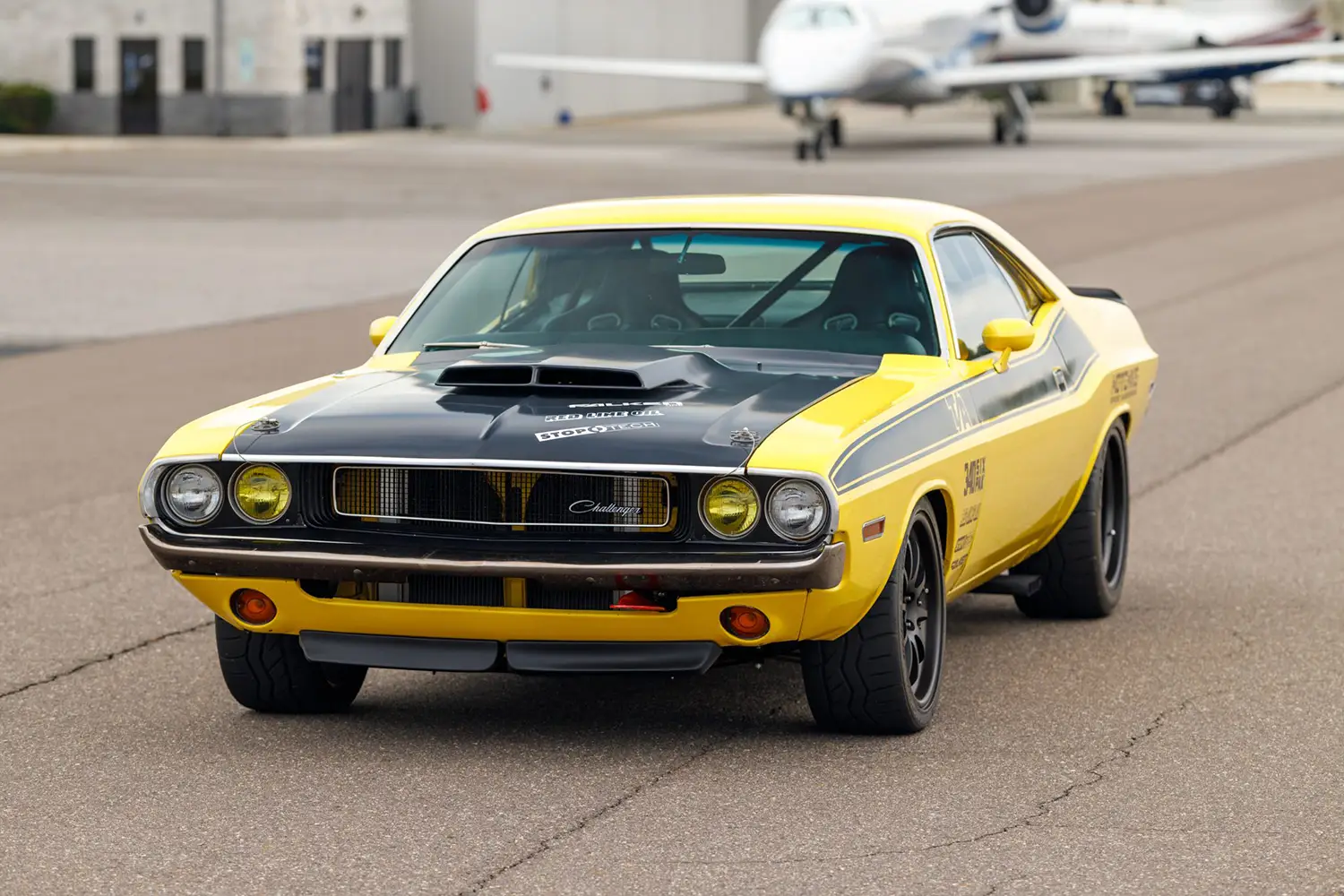
The 1970 Dodge Challenger is a definitive piece of American muscle car history. However, not all Challengers are created equal. This particular coupe, dubbed the Hotchkis 1970 Dodge Challenger E-Max, is a unique custom build with a fascinating story. It was extensively modified by the team at Hotchkis Performance in 2008 and then proudly displayed at the SEMA Show that autumn. Since then, the car has been featured in major publications like Speedhunters and Car and Driver, cementing its place as an iconic Mopar track machine.
The SEMA Star and Track Development
The “E-Max” project started life as a standard 1970 Challenger, finished in the factory Top Banana color. The transformation saw it repainted and built to evoke the spirit of the rare Challenger T/A homologation special. This included fitting a flat-black fiberglass scooped hood and a matching ducktail rear spoiler. It also received period-correct longitudinal black stripes and side-outlet dual exhaust. The car was not just for show, though; it served as a crucial development platform for Hotchkis’ Mopar suspension components.
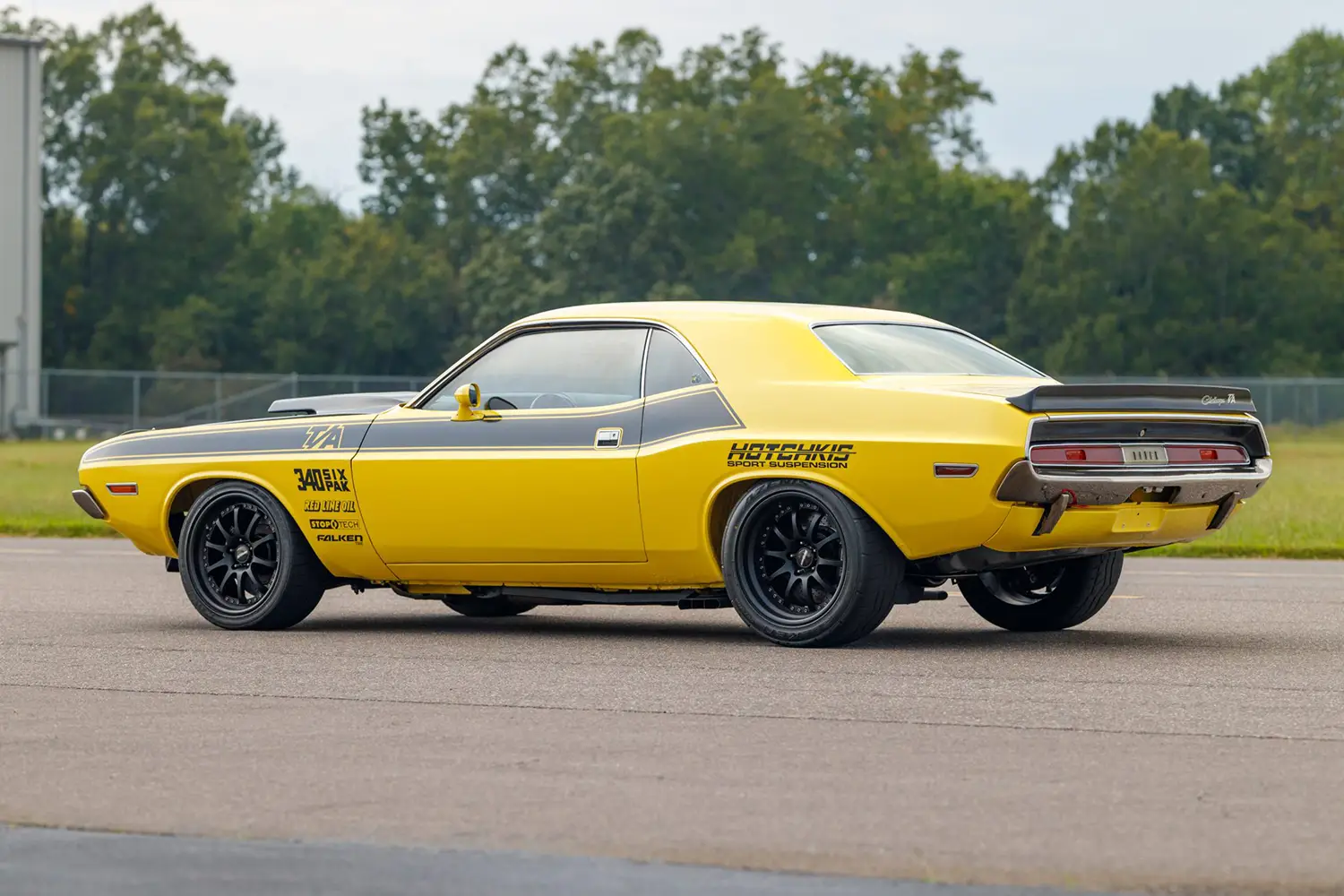
Signature Hotchkis Suspension System
As a Hotchkis vehicle, the most important modifications focused on handling and performance. The car currently runs a complete Hotchkis E-Body Total Vehicle Suspension System, or TVS. This system is a comprehensive upgrade, moving far beyond the factory setup. Components include front and rear sport sway bars for reduced body roll. Furthermore, it features geometry-corrected tubular front upper control arms. You will also find adjustable strut rods, adjustable lower diagonal rods, and specialized sport springs.
Exterior Style and Track-Ready Details
Repainted in its original Top Banana hue, the Challenger demands attention on the street or the track. It features blacked-out headlight and taillight panels for an aggressive look. The black-chrome bumpers and a flip-up fuel door add subtle styling touches. Track readiness is emphasized by sponsor graphics and practical front and rear tow loops. The exterior condition reflects its use, showing some chipped, bubbling, and cracked paint, a testament to its history of use.
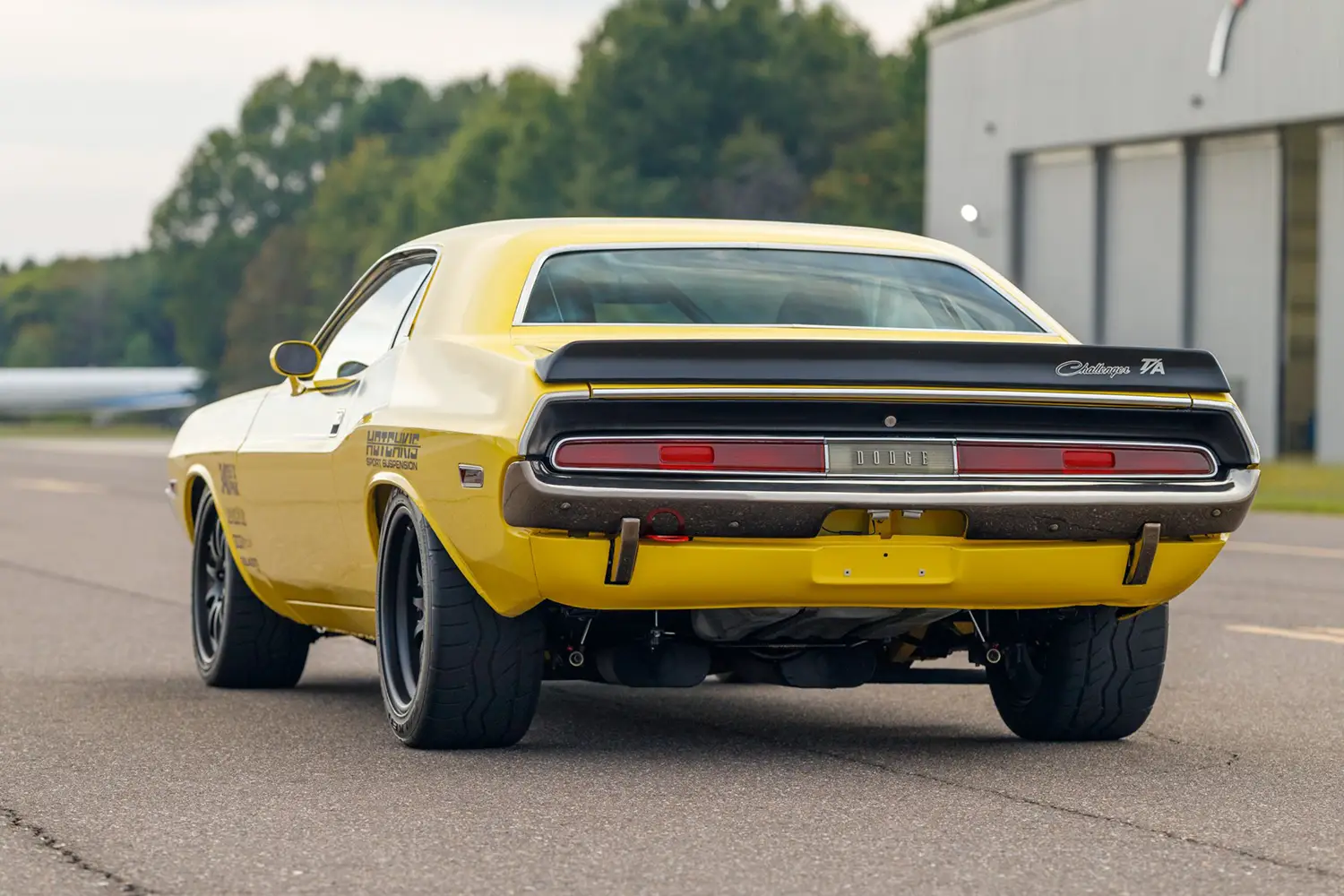
Forgeline Wheels and StopTech Brakes
The car’s visual appeal is massively boosted by its rolling stock. It sits on sharp black-finished 10-spoke Forgeline ZX3 three-piece wheels. These are wrapped in sticky Falken Azenis tires, staggered in size. The fronts measure 275/35, while the rears are wider at 295/40. Stopping power is equally crucial for a performance build. Therefore, the car is equipped with StopTech brake calipers clamping drilled rotors at all four corners. A Wilwood bias adjuster is also part of the braking system, allowing for precise setup.
A Performance-Focused Cabin
Inside, the cabin maintains a distinctly performance-oriented feel. Bolstered black Corbeau bucket seats securely hold the occupants during hard cornering. For safety, the seats are complemented by Simpson four-point harnesses. These harnesses are anchored to a black roll bar which extends into the trunk for chassis stiffness. Other touches include woodgrain trim and a padded dashboard.
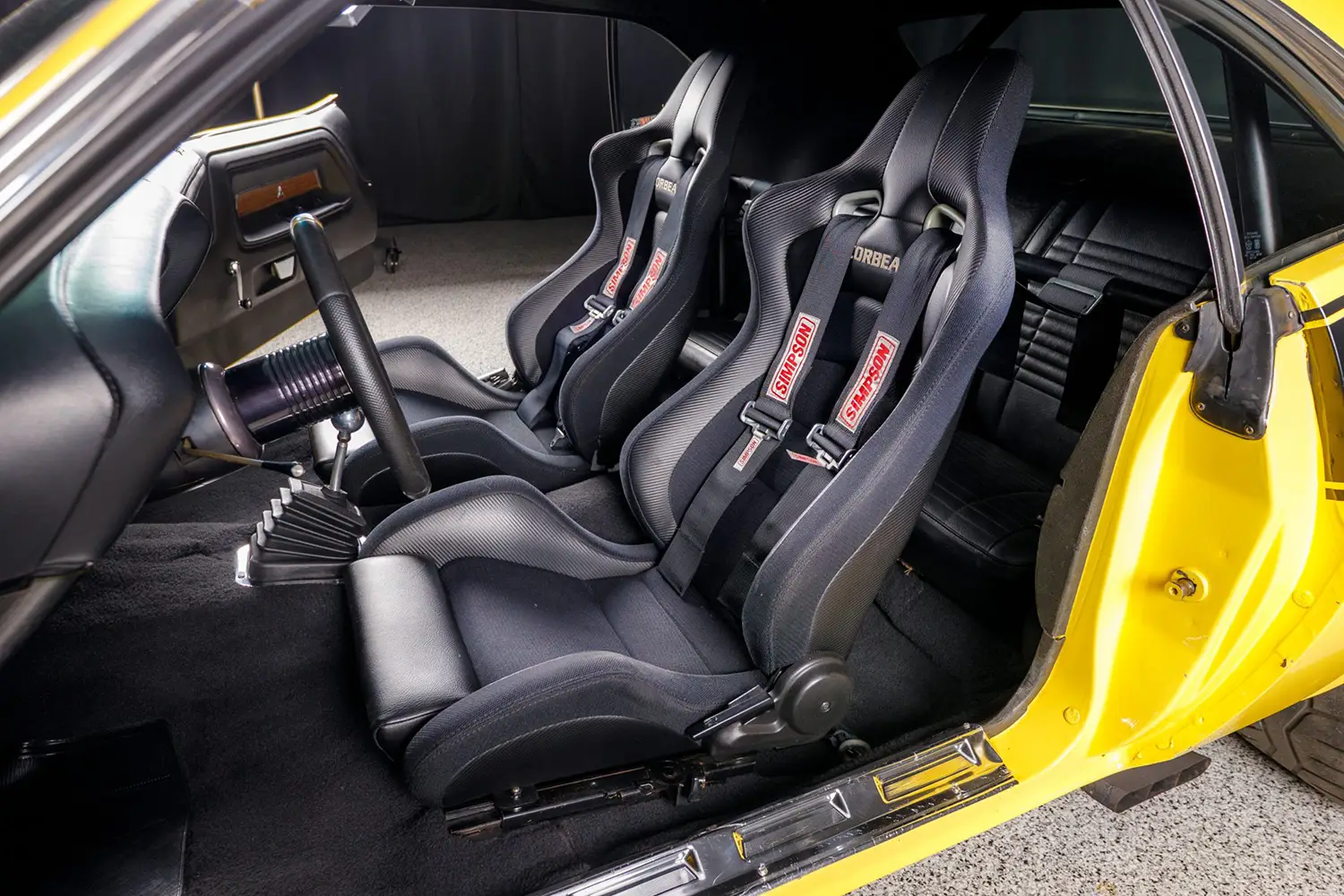
Instrumentation and Interior Upgrades
Behind the Grant steering wheel, the driver faces a full array of gauges. The rally-style cluster includes a 150-mph speedometer and an 8k-rpm tachometer. Auxiliary AutoMeter gauges for coolant temperature and oil pressure are mounted to the right of the steering wheel. The five-digit odometer shows 27k miles, though the actual mileage is unknown. Notably, Dynamat insulation was applied before new black carpeting was installed, enhancing the cabin feel.
Power, Engine Specs, and Performance
The heart of the Hotchkis 1970 Dodge Challenger E-Max is a 340ci V8 engine built for serious work. It is topped by the famous “Six Pack” setup, utilizing a trio of Holley two-barrel carburetors for maximum induction. The motor breathes better thanks to Edelbrock Performer cylinder heads and Doug’s Headers. Ignition is managed by an MSD system, ensuring a powerful spark. A Flowmaster dual exhaust system exits via NASCAR-style side pipes, giving the car a ferocious soundtrack. Original 340 Six Pack engines were factory-rated at 290 horsepower and 345 lb-ft of torque. This modified unit, featuring Edelbrock heads, likely produces figures well above those original numbers. Power is sent to the rear wheels via a Tremec TKO 600 five-speed manual transmission, a significant upgrade over the original three-speed manual.
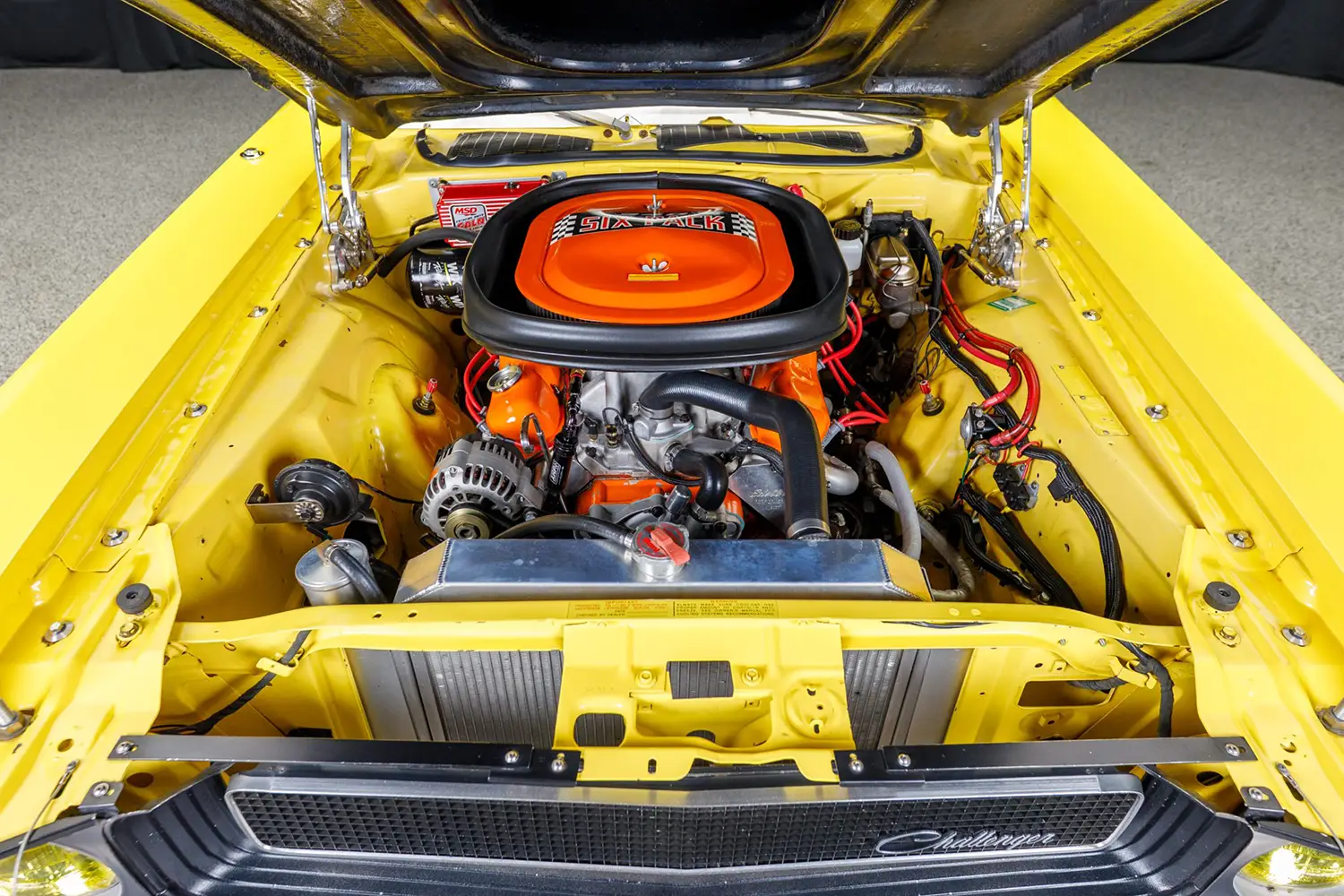
Summary of a Modified Mopar Legend
The Hotchkis “E-Max” 1970 Dodge Challenger Six Pack is far more than a simple tribute. It is a documented, track-proven test bed developed by one of the industry’s top suspension companies. From its aggressive T/A styling and unique color to its modern brake and suspension components, this car is a cohesive and potent blend of classic Mopar style and contemporary performance engineering. It is an impressive machine, recently recovered and ready for its next chapter with a new enthusiast.
Disclaimer: This article is for informational and entertainment purposes only. The information provided is based on market trends and personal opinions and should not be considered financial or investment advice. Readers should always conduct their own research and consult with a professional advisor before making any decisions.
Source & Details: bringatrailer.com
